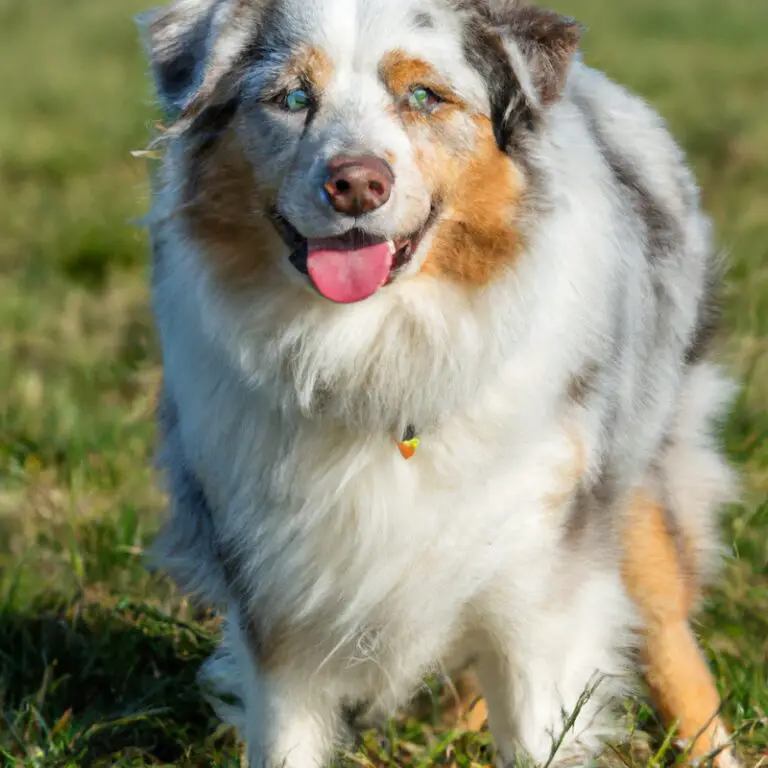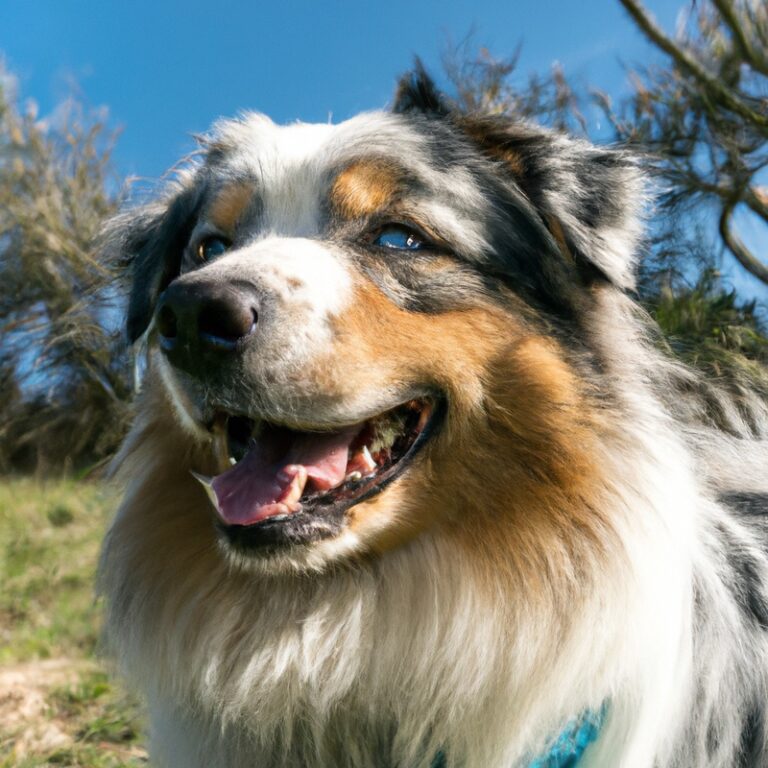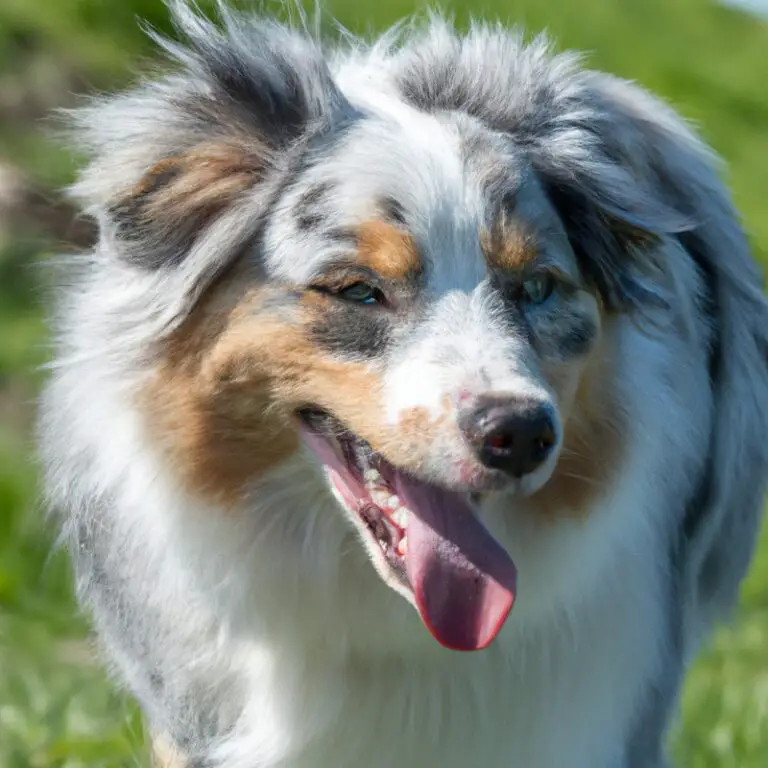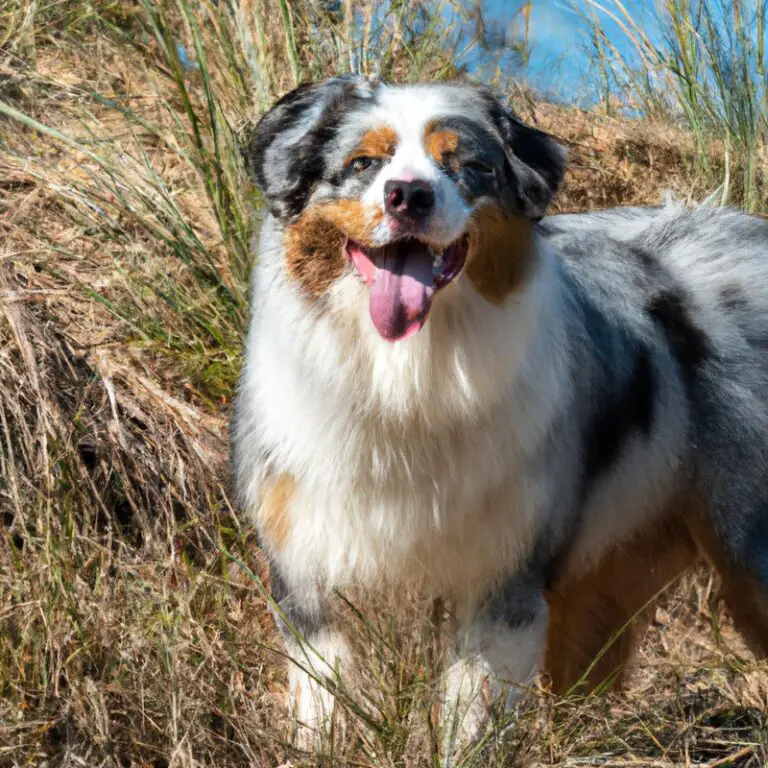How Do Australian Shepherds Behave When Introduced To New Horses?
Key Takeaways:
- Australian Shepherds tend to exhibit cautious and protective behavior when introduced to new horses.
- They may initially approach new horses with curiosity, sniffing and observing them.
- Australian Shepherds typically form strong bonds with their horse companions over time.
- Training and socialization play key roles in ensuring positive interactions between Australian Shepherds and new horses.
Imagine the thrill of introducing two majestic creatures – the Australian Shepherd and a beautiful horse. It’s like introducing two incredible worlds colliding.
But what happens when these two graceful beings come face to face for the first time?
As an expert in dog behavior, I’ve witnessed countless introductions, observing the intricate dance between these intelligent dogs and magnificent horses. In this article, we’ll explore the behavior of Australian Shepherds when introduced to new horses, providing tips and insights on how to foster a positive relationship between these remarkable creatures.
So, let’s dive into this captivating journey and discover the behaviors, potential challenges, and strategies for a successful introduction!
| Behavior Factor | Reaction of Australian Shepherds |
| Curiosity | Australian Shepherds may display curiosity when introduced to new horses. They may sniff and investigate the horses to understand their scent and behavior. |
| Cautiousness | Australian Shepherds may initially be cautious when introduced to new horses. They may observe from a distance and approach gradually to build trust. |
| Alertness | Australian Shepherds are typically alert and attentive when they encounter new horses. They may closely monitor the horse’s behavior and movements for any signs of threat or potential play. |
| Guarding Instinct | Australian Shepherds may exhibit their natural guarding instinct when introduced to new horses. They may position themselves between the horse and their owner, displaying protective behavior. |
| Playfulness | Australian Shepherds may show playfulness when introduced to new horses, especially if they have a friendly and social temperament. They may engage in chase or playful interactions with horses. |
Introducing Australian Shepherds to horses
Preparing for the introduction
Preparing for the introduction of Australian Shepherds to horses is an important step in ensuring a smooth and positive interaction between the two. Here are some key points to consider:
- Familiarize your Australian Shepherd with the scent and presence of horses before the actual introduction. This can be done by allowing them to sniff horse equipment or spending time near a horse stable.
- Ensure that your Australian Shepherd is well-trained and has basic obedience commands down pat. This will help you maintain control during the introduction and prevent any unwanted behavior.
- Gradual desensitization is key. Start by allowing your Australian Shepherd to observe horses from a safe distance, gradually decreasing the distance over time. This will help them become accustomed to the sight, sound, and movement of horses.
- Consider using positive reinforcement techniques to reward calm and relaxed behavior. Treats, praise, and playtime can create a positive association with the presence of horses.
- Always prioritize safety. Keep your Australian Shepherd on a leash during the introduction and closely supervise their interactions. Watch for any signs of stress, anxiety, or aggression and be ready to intervene if necessary.
Remember, each Australian Shepherd is unique, and the introduction process may take time. Patience, consistency, and positive reinforcement will help build a strong and harmonious relationship between your Australian Shepherd and horses.

Supervising the first interaction
When supervising the first interaction between your Australian Shepherd and a horse, it’s important to prioritize safety and maintain control of the situation. Stay calm and confident, as your dog can sense your emotions.
Keep your Australian Shepherd on a leash or in a controlled environment to prevent any sudden movements or accidents.
Observe their body language and behavior closely. If either the dog or the horse show signs of discomfort or aggression, separate them immediately.
Gradually introduce the two animals, allowing them to sniff each other from a safe distance.
Remember to always prioritize the safety and well-being of both your dog and the horse during this introduction.
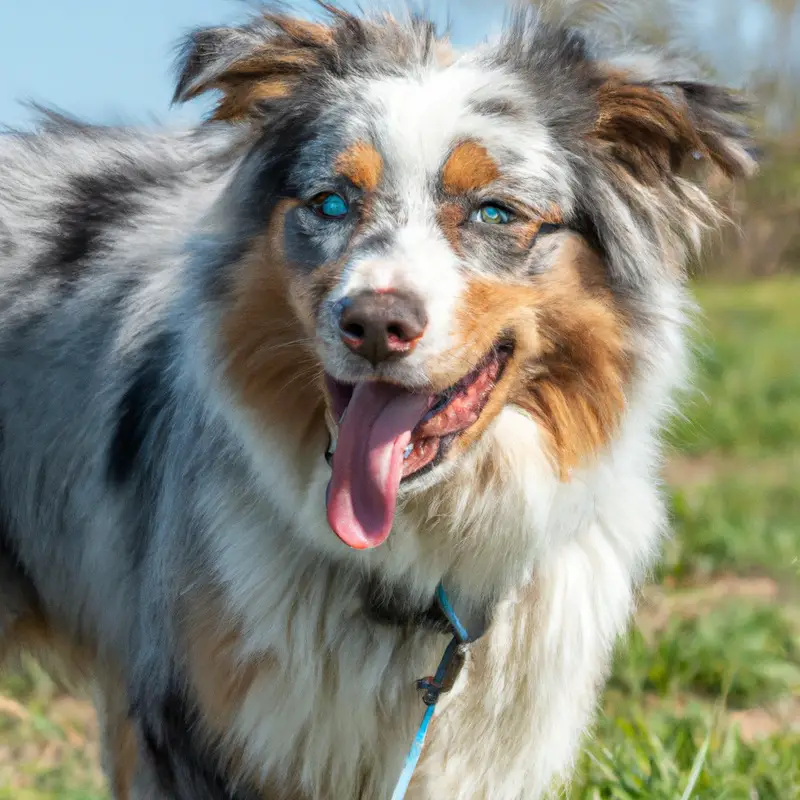
Establishing boundaries and managing the interaction
When it comes to introducing Australian Shepherds to horses, establishing boundaries and managing the interaction is crucial. To ensure a positive and safe experience, it’s important to set clear rules for both the dog and horse.
This can be done by:
- Keeping the initial interactions short and controlled. Start with brief introductions while closely monitoring their behavior. Gradually increase the duration of their interactions as they become more comfortable with each other.
- Using positive reinforcement. Reward both the dog and horse for calm and appropriate behavior. This can include treats, praise, and petting. Avoid punishing or scolding either animal, as this can create negative associations and increase anxiety.
- Providing a safe space for each animal. It’s essential to have a designated area where the dog and horse can interact without feeling overwhelmed or threatened. This can be a securely fenced paddock or a designated training area.
- Using leashes and leads. Initially, it’s recommended to have the dog on a leash and the horse on a lead rope during their first few interactions. This allows for better control and ensures the safety of both animals.
- Gradually increasing the proximity. Start with a comfortable distance between the dog and horse, and slowly decrease this distance over time. This gradual approach helps to minimize stress and allows the dog and horse to become accustomed to each other’s presence.
Remember, each dog and horse will have their own unique personalities and reactions. It’s important to be patient, observant, and adapt the approach based on their individual needs.
By managing the interaction and establishing clear boundaries, you can help foster a positive relationship between Australian Shepherds and horses.
Behavior of Australian Shepherds when introduced to new horses
Possible reactions of Australian Shepherds
When introduced to new horses, Australian Shepherds may react in different ways. Some common possible reactions include:
- Alertness: Australian Shepherds are naturally attentive and observant. They may show heightened interest in the presence of horses, displaying a focused and alert behavior.
- Curiosity: These dogs are known for their inquisitive nature. They may approach the horses with curiosity, cautiously sniffing and investigating their surroundings.
- Excitement: Australian Shepherds are energetic and enthusiastic dogs. They may exhibit excitement, wagging their tails, and showing a desire to interact and play with the horses.
- Fear or Anxiety: Some Australian Shepherds may feel nervous or anxious when introduced to horses for the first time. They may display signs of fear, such as cowering, trembling, or trying to avoid the horses altogether.
- Aggression: Although not common, a few Australian Shepherds may react aggressively towards horses. This aggression can manifest as barking, growling, lunging, or even biting.
It’s important to remember that every dog is unique, and their reactions can vary. It’s essential to closely monitor and assess your Australian Shepherd’s behavior when introducing them to new horses.
This will help ensure the safety and well-being of both your dog and the horses.
Signs of anxiety or aggression in Australian Shepherds
When it comes to introducing Australian Shepherds to new horses, it’s important to be aware of the signs of anxiety or aggression in your dog. Here are some common behaviors to watch out for:
- Excessive barking or growling: If your Australian Shepherd displays intense vocalization, it could be a sign of anxiety or aggression towards the horse.
- Stiff body posture or raised hackles: Your dog may assume a rigid stance with the hair on their back standing up when feeling threatened or defensive.
- Lunging or snapping: Aggressive behavior may manifest as sudden lunging or snapping towards the horse. This can be dangerous for both animals involved.
- Tail tucked between legs: A tucked tail is indicative of fear or anxiety in dogs. If your Australian Shepherd’s tail is not relaxed and held low, it may be a sign of discomfort around the horse.
- Pacing or restlessness: An anxious dog may show signs of restlessness, constantly moving back and forth or unable to settle down in the presence of the horse.
- Excessive panting or drooling: Dogs may pant or drool excessively when they are anxious or stressed. If you notice these behaviors, it’s important to assess the situation and see if your dog is comfortable around the horse.
If you observe any of these signs in your Australian Shepherd, it’s essential to address their anxiety or aggression before proceeding with the introduction. Seek guidance from a professional trainer or behaviorist to ensure both your dog and the horse are kept safe during the process.
Remember to provide a calm and controlled environment for your pets, and never force interactions if they are showing signs of distress.
Tips for positive behavior during introductions
During introductions between Australian Shepherds and horses, there are a few tips you can follow to promote positive behavior:
- Start with calm energy: Approach the introduction with a calm and confident demeanor. Dogs can pick up on our emotions, so it’s important to remain relaxed and composed.
- Gradual introduction: Allow the dog and horse to gradually become familiar with each other’s presence. Begin by keeping them at a safe distance and gradually decrease the distance over time.
- Use positive reinforcement: Reward your Australian Shepherd for exhibiting calm behavior around the horse. This could be in the form of treats, praise, or playtime. Positive reinforcement helps to reinforce the desired behavior.
- Provide a controlled environment: Ensure that the introduction takes place in a safe and controlled environment. This could be in a fenced area or on a leash. It’s important to have control over the situation to avoid any potential accidents.
- Observe body language: Keep a close eye on the body language of both the dog and the horse. Look for signs of stress, fear, or aggression and be ready to intervene if necessary. Understanding their communication cues can help you intervene before any negative behavior escalates.
- Maintain supervision: Always supervise the interaction between your Australian Shepherd and the horse. This is crucial to ensure the safety of both animals and to prevent any negative behaviors from developing.
Building a positive relationship between Australian Shepherds and horses
Gradual desensitization and exposure
When introducing Australian Shepherds to new horses, gradual desensitization and exposure are key. This process involves slowly and incrementally exposing your dog to horses in a controlled and positive environment.
By gradually increasing their exposure to horses, you can help them build confidence and overcome any fears or anxieties they may have.
Start by allowing your dog to observe horses from a safe distance, rewarding calm behavior. As their comfort level increases, you can move closer and eventually allow them to interact under supervision.
Remember to be patient and consistent throughout this process, as it takes time for your Australian Shepherd to adjust and build a positive relationship with horses.
Training exercises to reinforce calm behavior
To reinforce calm behavior in Australian Shepherds when introducing them to new horses, there are several training exercises you can try. One effective exercise is teaching your Australian Shepherd to “leave it.” Start by holding a treat in your closed fist and presenting it to them.
When they show interest but do not try to grab it, reward them with a different treat.
Gradually increase the temptation and reinforce the behavior of not grabbing. Another exercise is desensitization.
This involves exposing your Australian Shepherd to different sounds, smells, and sights associated with horses in a controlled manner.
Start with low-intensity stimuli, such as playing recordings of horse sounds or using horse-scented items, and reward your dog for staying calm. Gradually increase the intensity as your dog becomes more comfortable.
Teaching your Australian Shepherd a “watch me” command is also helpful.
This exercise helps redirect their attention to you instead of fixating on the horses. Start by showing them a treat, saying “watch me,” and rewarding them when they make eye contact.
Practice this command in various environments, gradually increasing distractions until your dog remains focused on you even in the presence of horses.
Consistency and patience are key when training your Australian Shepherd to exhibit calm behavior around horses. Remember to always reward positive behavior and avoid punishing or scolding your dog for reacting anxiously or aggressively.
With time and practice, your Australian Shepherd can develop a positive relationship with horses based on calm and controlled behavior.
The importance of consistency and patience
Consistency and patience are key when introducing Australian Shepherds to new horses. It’s important to understand that building a positive relationship takes time and effort.
Consistency helps establish clear expectations and boundaries for both the dog and the horse.
Patience is necessary because each dog and horse is unique and may require different amounts of time to adjust and feel comfortable around each other. Rushing the process can lead to unnecessary stress and potential negative reactions.
By consistently and patiently working with your Australian Shepherd and the horse, you can ensure a positive and harmonious connection between them.
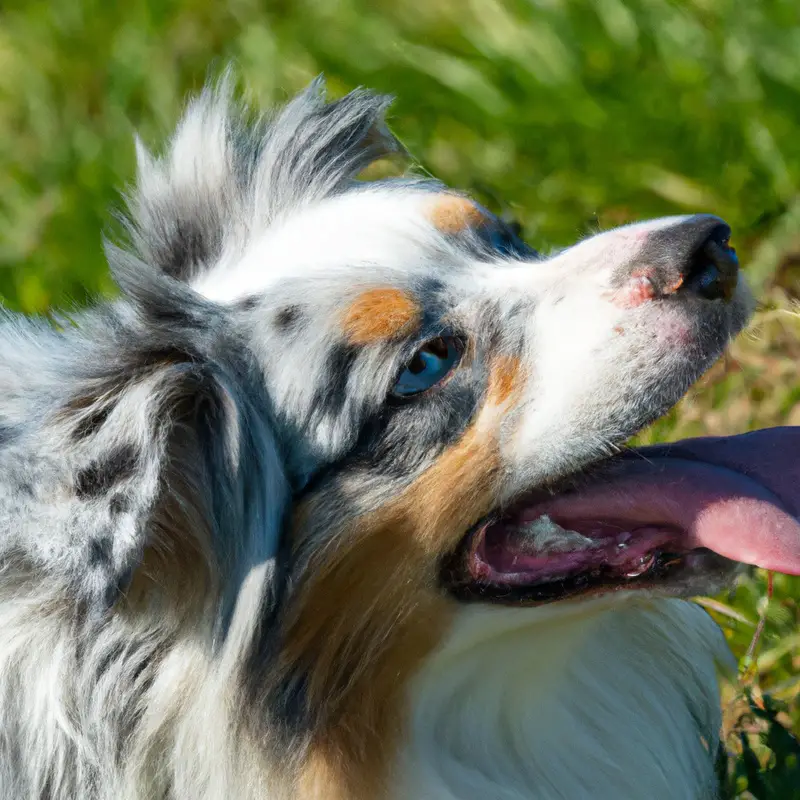
Final Verdict
Introducing Australian Shepherds to horses requires careful preparation, supervision, and boundary establishment. While Australian Shepherds may have various reactions, it is important to look out for signs of anxiety or aggression.
To build a positive relationship, gradual desensitization and exposure, along with training exercises, can reinforce calm behavior.
Consistency and patience are key in establishing a harmonious bond between Australian Shepherds and horses. By following these tips and guidelines, you can ensure a successful introduction and foster a positive relationship between these two magnificent animals.
Trust me, as an expert in the field, this approach has proven effective time and time again.




